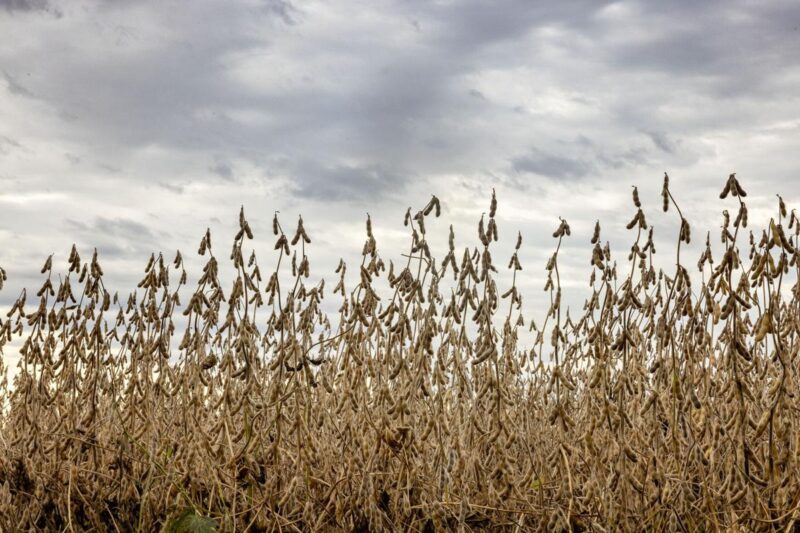 By DANIEL GRANT
By DANIEL GRANT
FarmWeek
With a majority of soybeans in the bin (76%) so far this harvest, the U.S. is in position to boost exports in the months ahead.
But competition remains strong in South America, where farmers are sitting on ample stocks and planting the 2023-24 crop.
“There are more old-crop soybeans in Brazil than there’s ever been,” Aaron Edwards, commodity risk adviser for Roach Ag, told the RFD Radio Network. “But there’s also more demand in Brazil than in the past.
“The real question is do new-crop U.S. soybeans get the China business or do old-crop Brazilian beans get the China business?” he said. “It’s a pretty strong tug-of-war.”
U.S. soybean export inspections for the week ending Oct. 20 jumped from 2.04 million tons to 2.46 million as China purchased a majority of shipments for the week.
Overall, USDA estimates U.S. soybean exports could decline 35 million bushels this year to 1.76 billion due to increased competition from South America.
However, U.S. soybean crush is expected to increase 10 million bushels to 2.3 billion driven by higher soy meal exports and domestic demand for soy oil.
“Personally, I think we could get a friendly demand story for U.S. bean exports,” Roach said. “As of now, that’s a neck-and-neck race.”
**Editor’s Note: If you find the story above of value, consider clicking one of the Google ads embedded in the story. It costs you nothing but Google will give the website owner a few cents. This is a way to help support local news at no cost to the reader.
One factor that could tilt the competition in favor of the U.S. near-term involves weather challenges as Brazilian farmers plant the 2023-24 soybean crop. The challenges could tempt Brazilian soybean users to hold more of the old crop rather than export it.
Planting progress ranges from 20% complete in parts of Brazil up to 60% complete in Mato Grosso, Brazil’s top soy producing state responsible for nearly one-third of output, as of the last week of October.
“Some of it will need to be replanted (in Brazil),” Edwards said. “In the south, some of it got flooded out and, in the north, it was too dry to get some out of the ground.”
The weather extremes occurring during planting in South America are part of a shift from a La Nina pattern to El Nino.
“We’ve had three years in a row of La Nina and now we’re in year one of El Nino,” Edwards said. “El Nino tends to produce more rain in the south and less rain to the north (in South America).”
**Editor’s Note: If you find the story above of value, consider clicking one of the Google ads embedded in the story. It costs you nothing but Google will give the website owner a few cents. This is a way to help support local news at no cost to the reader.
Brazilian farmers are expected to plant a record 112 million acres of soybeans for 2023-24, up 2.5% from the past season, while cutting corn plantings by 5% to 52 million acres, according to the National Supply Company in Brazil.
If realized, Brazilian bean production could reach a record 5.95 billion bushels in the year ahead while corn output could slip 9.5% to 4.7 billion bushels. Brazilian corn exports subsequently could decline by 27% in the year ahead.
This story was distributed through a cooperative project between Illinois Farm Bureau and the Illinois Press Association. For more food and farming news, visit FarmWeekNow.com.
**Editor’s Note: If you find the story above of value, consider clicking one of the Google ads embedded in the story. It costs you nothing but Google will give the website owner a few cents. This is a way to help support local news at no cost to the reader.











































